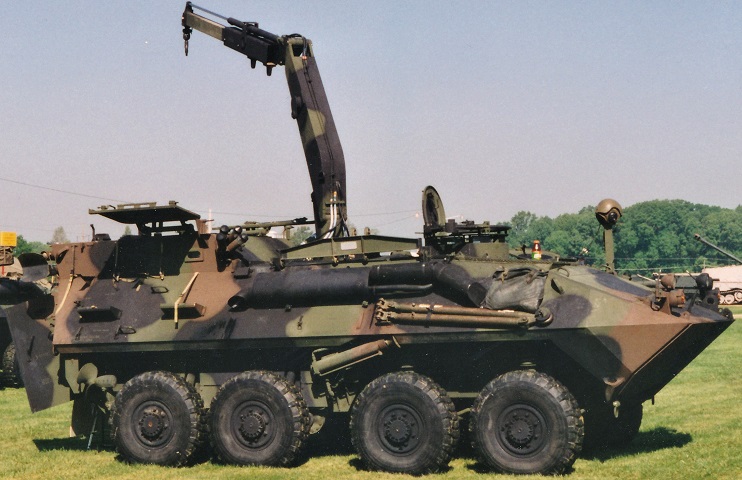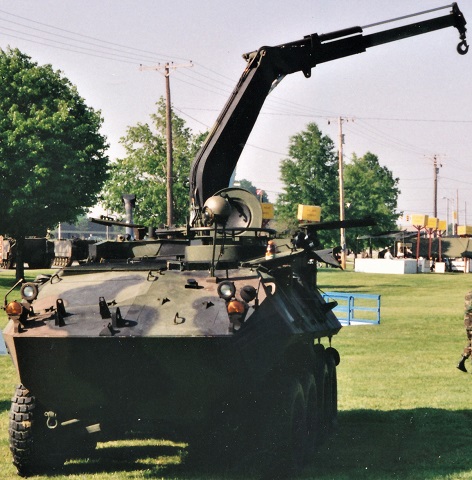
LAV-L and LAV-R.

The recovery crane on the LAV-R is immediately obvious, and its hull roof is raised at a more rearward point (behind the crane mount) compared to that of the LAV-L that is ironically towing it. The stabilizing outriggers are mounted between the second and third axles, and the hoist operator platform on the LAV-L can be seen just in front of the taillight under the duffle bag. These vehicles were in northern Saudi Arabia during operation Desert Storm. (Picture taken 1 Feb 1991; available from the National Archives.)

The driver's, commander's, and rear roof hatches, as well as the rear doors, are all open on this vehicle. The crane boom is extended, and the stabilizing outriggers can better be seen in this image below the end of the towing bar. A helmet is resting on the wire cutter mounted on the hull front. (Photo by Richard S. Eshleman.)

The front of the vehicle with the crane boom extended is shown here. (Photo by Richard S. Eshleman.)

The overlapping rear doors are open, providing both unhindered access to the rear compartment and an unhindered view of the rear winch. A vision block is mounted in the right-hand door. (Photo by Richard S. Eshleman.)

The spades for use during winching were stowed above the rear doors, and the location for the smoke grenade launchers can be seen at the front of the raised roof section. This vehicle was in the 1st Light Armored Infantry during Operation Desert Shield. (Picture taken 1 Oct 1990; available from the National Archives.)